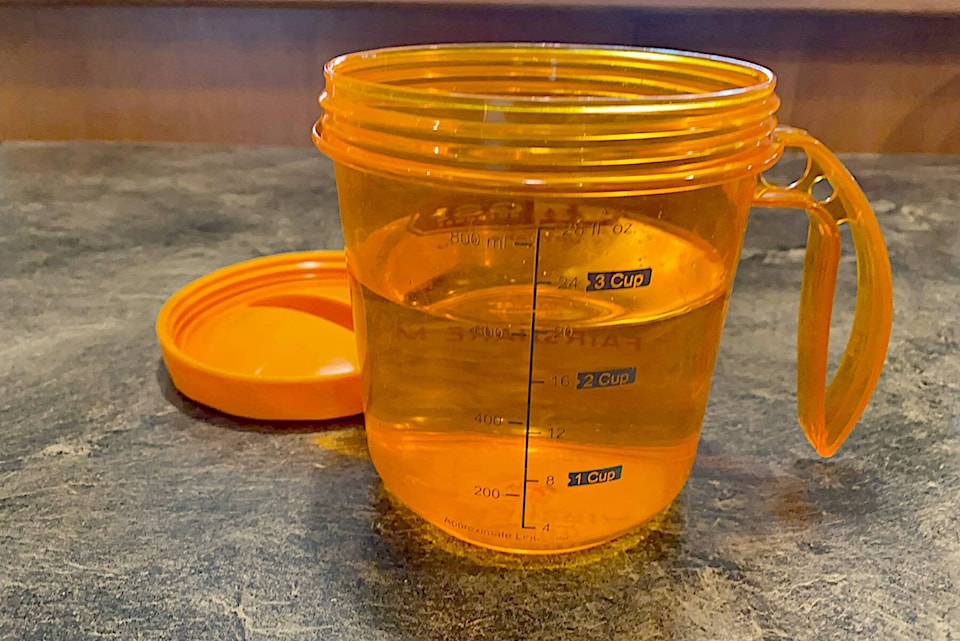Give 110 per cent.
It’s a line I’ve heard and seen, time and again, intended to motivate people.
This is the term used when giving sports pep talks. It’s a line that appears in books and articles on career success. It’s been used to encourage team members to work hard on a special project. You may have heard it used by some motivational speakers as well.
The expression has been around for more than a century and it has been used plenty of times.
A variant I heard recently was from someone who wanted to show enthusiastic support for an idea. “Totally,” he said. “I agree, 1,000 per cent.”
That’s a lot of agreement.
Because the 110 per cent line is so common, I hadn’t given it much thought.
READ ALSO: COLUMN: Angry outbursts won’t bring about change
READ ALSO: COLUMN: Computers and machines are not people
The other day, something changed when I took a look at a measuring cup in my kitchen.
The markings are in millilitres and fluid ounces. When the cup is at full capacity, it holds one litre and nothing more.
If this cup is completely full, it is impossible to pour 1.1 litres – 110 per cent – from it.
In order to give someone 1.1 litres, I need to have a bigger container, one that can hold at least that much if not more.
However, if I have a two-litre container full of water and pour out 1.1 litres, I haven’t given 110 per cent. I’ve given 55 per cent of what I have.
There are times when it is possible to have percentages greater than 100 per cent. A winter with a lot of snow could have 120 per cent of historical average. It’s also possible to set a goal of lifting 100 kilograms, but then exceed it by lifting 115 kilograms. That would be 115 per cent.
Neither of those examples have anything to do with my measuring cup. One has to do with comparisons and the other has to do with measuring performance against a stated goal.
When I’ve filled the cup in my kitchen, it is at 100 per cent capacity. There is no way to give 110 per cent of what I have.
If it is not possible to give 110 per cent, why does this line still remain? Why not use terms like, “Give it all you’ve got,” or “Do your very best” instead?
Someone who talks about giving 110 per cent is either prone to exaggeration or simply not good at math.
Later, outside of my kitchen, I kept thinking about the concept of trying to give 110 per cent.
The line isn’t just a phrase used by people who are bad at math. It can also have some serious consequences.
Constantly trying to go beyond capacity will eventually lead to stress or burnout.
Neither of these are good.
The Canadian Medical Association has resources and information on stress and burnout, as does the Canadian Centre for Occupational Health and Safety. The Centre for Addiction and Mental Health, Canada’s largest mental health teaching hospital, also addresses issues related to stress and burnout.
These are complex and difficult topics, and there are no easy answers. However, getting rid of the “giving 110 per cent” phrase may be a good start.
The statement represents an impossible goal. It’s time to abandon it.
John Arendt is the editor of the Summerland Review.
To report a typo, email:
news@summerlandreview.com.
news@summerlandreview.com
Like us on Facebook and follow us on Twitter.
